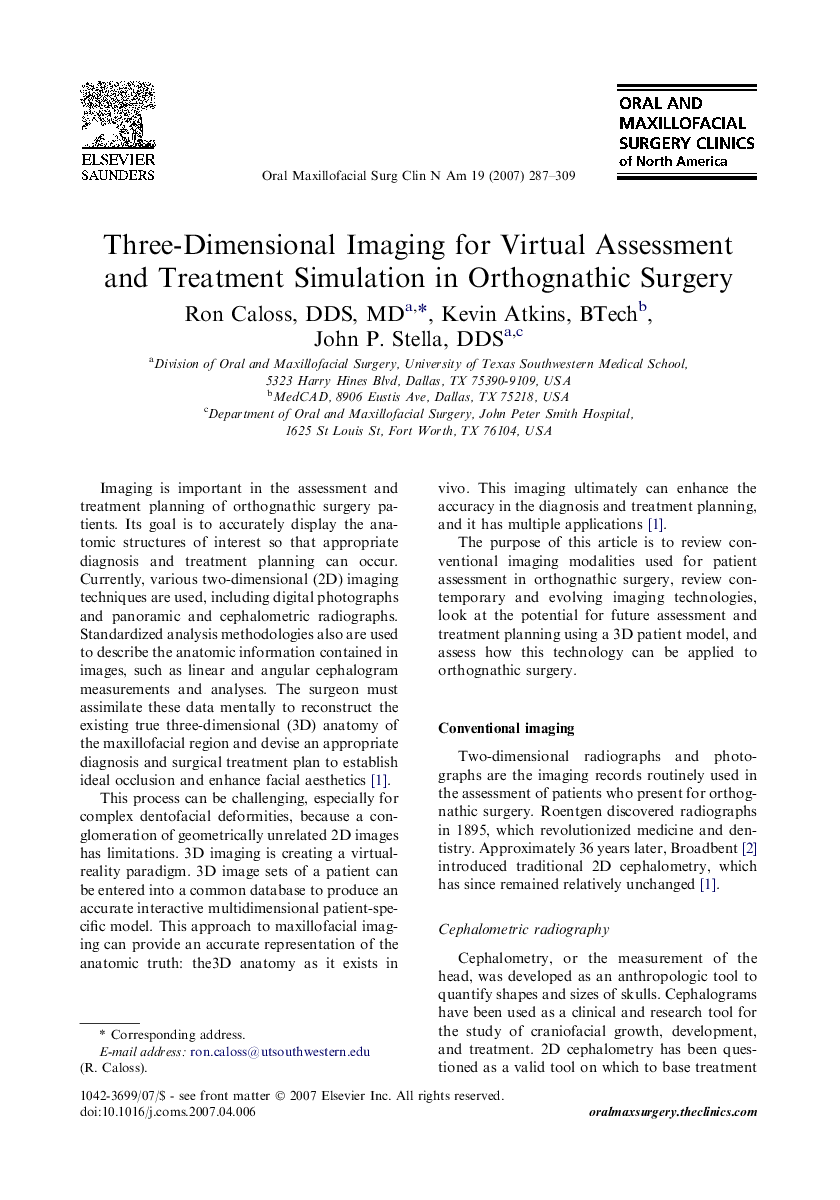| Article ID | Journal | Published Year | Pages | File Type |
|---|---|---|---|---|
| 3163678 | Oral and Maxillofacial Surgery Clinics of North America | 2007 | 23 Pages |
Abstract
Conventional two-dimensional imaging for assessing and treatment planning orthognathic surgery has limitations. Three-dimensional imaging offers the ability to more accurately portray maxillofacial anatomy. Three-dimensional CT-based models can be generated for assessment of the dentofacial deformity. Interactive software can simulate surgical moves and algorithms can predict the three-dimensional soft tissue changes that will occur. This will inevitably effect diagnosis and treatment planning for orthognathic surgery in the future.
Related Topics
Health Sciences
Medicine and Dentistry
Dentistry, Oral Surgery and Medicine
Authors
Ron Caloss, Kevin Atkins, John P. Stella,
